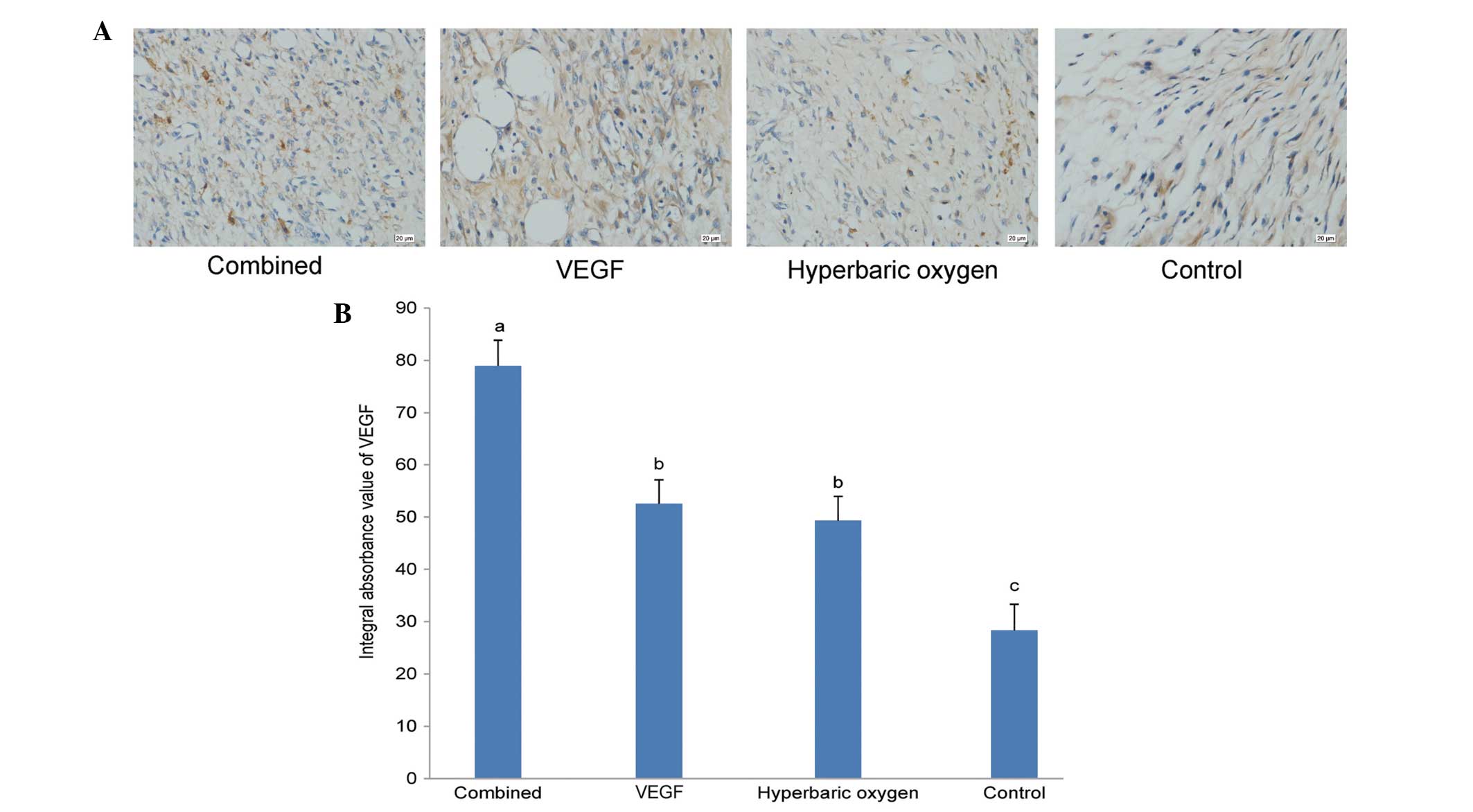|
1
|
Matsumura H, Yoshizawa N, Vedder NB and
Watanabe K: Preconditioning of the distal portion of a rat
random-pattern skin flap. Br J Plast Surg. 54:58–61. 2001.
View Article : Google Scholar : PubMed/NCBI
|
|
2
|
Richards L, Lineaweaver WC, Stile F, Zhang
J and Zhang F: Effect of hyperbaric oxygen therapy on the tubed
pedicle flap survival in a rat model. Ann Plast Surg. 50:51–56.
2003. View Article : Google Scholar : PubMed/NCBI
|
|
3
|
Padubidri A and Browne E Jr: Effect of
vascular endothelial growth factor (VEGF) on survival of random
extension of axial pattern skin flaps in the rat. Ann Plast Surg.
37:604–611. 1996. View Article : Google Scholar : PubMed/NCBI
|
|
4
|
Kryger Z, Zhang F, Dogan T, Cheng C,
Lineaweaver WC and Buncke HJ: The effects of VEGF on survival of a
random flap in the rat: examination of various routes of
administration. Br J Plast Surg. 53:234–239. 2000. View Article : Google Scholar : PubMed/NCBI
|
|
5
|
Khan A, Ashrafpour H, Huang N, et al:
Acute local subcutaneous VEGF165 injection for augmentation of skin
flap viability: efficacy and mechanism. Am J Physiol Regul Integr
Comp Physiol. 287:R1219–R1229. 2004. View Article : Google Scholar : PubMed/NCBI
|
|
6
|
Zhang T, Gong W, Li Z, et al: Efficacy of
hyperbaric oxygen on survival of random pattern skin flap in
diabetic rats. Undersea Hyperb Med. 34:335–339. 2007.PubMed/NCBI
|
|
7
|
Ulkür E, Karagoz H, Ergun O, Celikoz B,
Yildiz S and Yildirim S: The effect of hyperbaric oxygen therapy on
the delay procedure. Plast Reconstr Surg. 119:86–94. 2007.
View Article : Google Scholar : PubMed/NCBI
|
|
8
|
Kranke P, Bennett MH, Martyn-St James M,
Schnabel A and Debus SE: Hyperbaric oxygen therapy for chronic
wounds. Cochrane Database Syst Rev. 4:CD0041232012.PubMed/NCBI
|
|
9
|
Jung S, Wermker K, Poetschik H, Ziebura T
and Kleinheinz J: The impact of hyperbaric oxygen therapy on
serological values of vascular endothelial growth factor (VEGF) and
basic fibroblast growth factor (bFGF). Head Face Med. 6:292010.
View Article : Google Scholar : PubMed/NCBI
|
|
10
|
Hunt TK and Pai MP: The effect of varying
ambient oxygen tensions on wound metabolism and collagen synthesis.
Surg Gynecol Obstet. 135:561–567. 1972.PubMed/NCBI
|
|
11
|
Rinsch C, Quinodoz P, Pittet B, et al:
Delivery of FGF-2 but not VEGF by encapsulated genetically
engineered myoblasts improves survival and vascularization in a
model of acute skin flap ischemia. Gene Ther. 8:523–533. 2001.
View Article : Google Scholar : PubMed/NCBI
|
|
12
|
Mcfarlane RM, Deyoung G and Henry RA: The
design of a pedicle flap in the rat to study necrosis and its
prevention. Plast Reconstr Surg. 35:177–182. 1965. View Article : Google Scholar : PubMed/NCBI
|
|
13
|
Mandriota SJ, Pyke C, Di Sanza C, Quinodoz
P, Pittet B and Pepper MS: Hypoxia-inducible angiopoietin-2
expression is mimicked by iodonium compounds and occurs in the rat
brain and skin in response to systemic hypoxia and tissue ischemia.
Am J Pathol. 156:2077–2089. 2000. View Article : Google Scholar : PubMed/NCBI
|
|
14
|
Ozkan O and Ozgentas HE: Combination of
rat vest, teeth shortening and nail cutting to prevent
autocannibalization and protect surgical flaps. Plast Reconstr
Surg. 117:16712006. View Article : Google Scholar : PubMed/NCBI
|
|
15
|
Chen Z, Wang T, Cai L, et al:
Clinicopathological significance of non-small cell lung cancer with
high prevalence of Oct-4 tumor cells. J Exp Clin Cancer Res.
31:102012. View Article : Google Scholar : PubMed/NCBI
|
|
16
|
Shi ZR, Itzkowitz SH and Kim YS: A
comparison of three immunoperoxidase techniques for antigen
detection in colorectal carcinoma tissues. J Histochem Cytochem.
36:317–322. 1988. View Article : Google Scholar : PubMed/NCBI
|
|
17
|
da Rocha FP, Fagundes DJ, Pires JA and da
Rocha FS: Effects of hyperbaric oxygen and N-acetylcysteine in
survival of random pattern skin flaps in rats. Indian J Plast Surg.
45:453–458. 2012. View Article : Google Scholar : PubMed/NCBI
|
|
18
|
Daniel RA, Cardoso VK, Gois E Jr, et al:
Effect of hyperbaric oxygen therapy on the intestinal ischemia
reperfusion injury. Acta Cir Bras. 26:463–469. 2011. View Article : Google Scholar : PubMed/NCBI
|
|
19
|
Zhou Y, Liu XH, Qu SD, et al: Hyperbaric
oxygen intervention on expression of hypoxia-inducible
factor-1alpha and vascular endothelial growth factor in spinal cord
injury models in rats. Chin Med J (Engl). 126:3897–3903.
2013.PubMed/NCBI
|
|
20
|
Ijichi H, Taketomi A, Yoshizumi T, et al:
Hyperbaric oxygen induces vascular endothelial growth factor and
reduces liver injury in regenerating rat liver after partial
hepatectomy. J Hepatol. 45:28–34. 2006. View Article : Google Scholar : PubMed/NCBI
|
|
21
|
Ren P, Kang Z, Gu G, et al: Hyperbaric
oxygen preconditioning promotes angiogenesis in rat liver after
partial hepatectomy. Life Sci. 83:236–241. 2008. View Article : Google Scholar : PubMed/NCBI
|













